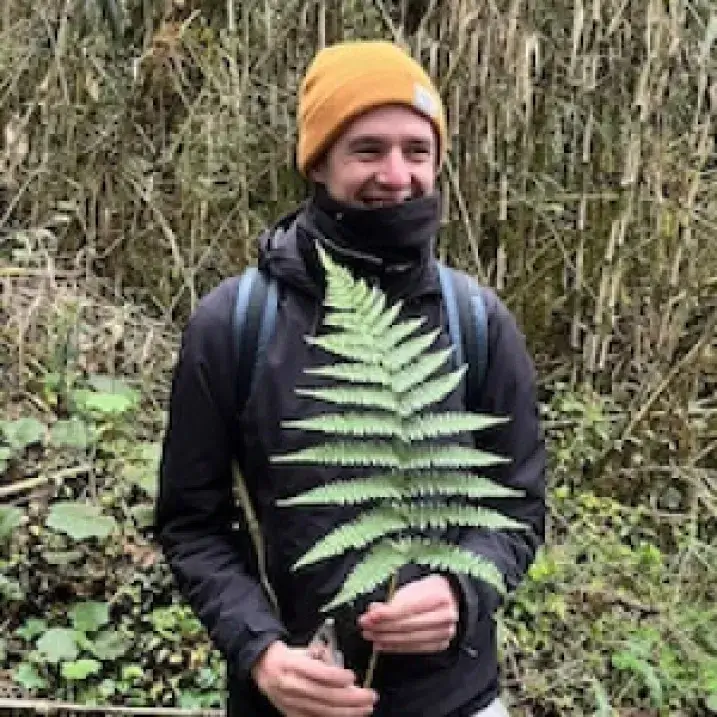BIO
My research interests have been largely influenced by the life and work of the famous 18th century naturalist, Alexander von Humboldt. Like Humboldt, I seek to apply a multidisciplinary approach to research and incorporate aspects from various disciplines, such as systematics, ecology, and evolutionary biology. In 2019, I joined the Barrington Lab as a PhD student to uncover and characterize diversity, taxonomy and distribution of extant fern lineages. For my dissertation research, I chose to take up a systemic revision of the Athyrium filix-femina complex in the Americas using target-capture sequencing approach. Additionally, I have had opportunities to assist in the description of a new species of fern Lellingeria cantarensis from mountains of Panama and an ongoing project exploring the historical biogeography of lasteropsid ferns.
My research interests draw inspiration from the life and work of the 18th-century naturalist Alexander von Humboldt. Like Humboldt, I aim to approach research with a multidisciplinary lens, incorporating elements from various fields like systematics, ecology, and evolutionary biology. In 2019, I became a PhD student in the Barrington Lab, to study the diversity, taxonomy, and distribution of extant fern lineages. For my dissertation research, I chose to conduct a systematic revision of the Athyrium filix-femina complex in the Americas using a target-capture sequencing approach. Additionally, I've had the opportunity to contribute to projects such as the description of a new fern species, Lellingeria cantarensis, found in the mountains of Panama and an ongoing project exploring the historical biogeography of lastreopsid ferns. Outside of the lab, I have had the amazing opportunities to gain additional field experience through courses in in both Mexico and Costa Rica. After graduate school, I hope to continue researching fern diversity and biogeography both in the lab and through field studies.
Bio
My research interests have been largely influenced by the life and work of the famous 18th century naturalist, Alexander von Humboldt. Like Humboldt, I seek to apply a multidisciplinary approach to research and incorporate aspects from various disciplines, such as systematics, ecology, and evolutionary biology. In 2019, I joined the Barrington Lab as a PhD student to uncover and characterize diversity, taxonomy and distribution of extant fern lineages. For my dissertation research, I chose to take up a systemic revision of the Athyrium filix-femina complex in the Americas using target-capture sequencing approach. Additionally, I have had opportunities to assist in the description of a new species of fern Lellingeria cantarensis from mountains of Panama and an ongoing project exploring the historical biogeography of lasteropsid ferns.
My research interests draw inspiration from the life and work of the 18th-century naturalist Alexander von Humboldt. Like Humboldt, I aim to approach research with a multidisciplinary lens, incorporating elements from various fields like systematics, ecology, and evolutionary biology. In 2019, I became a PhD student in the Barrington Lab, to study the diversity, taxonomy, and distribution of extant fern lineages. For my dissertation research, I chose to conduct a systematic revision of the Athyrium filix-femina complex in the Americas using a target-capture sequencing approach. Additionally, I've had the opportunity to contribute to projects such as the description of a new fern species, Lellingeria cantarensis, found in the mountains of Panama and an ongoing project exploring the historical biogeography of lastreopsid ferns. Outside of the lab, I have had the amazing opportunities to gain additional field experience through courses in in both Mexico and Costa Rica. After graduate school, I hope to continue researching fern diversity and biogeography both in the lab and through field studies.
